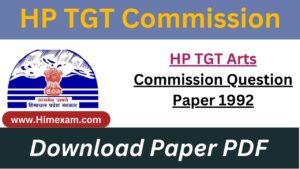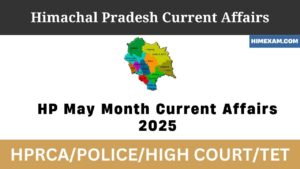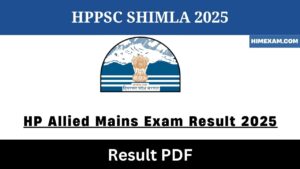Civil Disobedience Movement MCQ Question Answer In English
||Civil Disobedience Movement MCQ Question Answer||Civil Disobedience Movement Question Answer In English||
1. Dandi March was undertaken in
(A) 1932
(B) 1931
(C) 1929
(D) 1930
2. When did the ‘Dandi March’ begin?
(A) 31st December, 1929
(B) 26th January, 1930
(C) 12th March, 1930
(D) 6th April, 1930
3. At which Congress Session was the working committee authorized to launch a programme of Civil Disobedience?
(A) Bombay
(B) Lahore
(C) Lucknow
(D) Tripura
4. Which one of the following began with the Dandi March?
(A) Home Rule Movement
(B) Non-Co-operation Movement
(C) Civil Disobedience Movement
(D) Quit India Movement
5. Gandhiji started Dandi March from
(A) Champaran
(B) Sabarmati
(C) Bardoli
(D) Dandi
6. Which one of the following provinces had the highest number Satyagrahis in Mahatma Gandhi’s Dandi March?
(A) Bihar
(B) Gujarat
(C) Maharashtra
(D) Bengal
7. In which of the following movements women’s participation is considered to be the maximum?
(A) Non-Co-operation Movement
(B) Salt Satyagraha
(C) Bardoli March
(D) Quit India Movement
8. Who among the following participated in the Salt Satyagraha of Gandhi?
(A) Sarojini Naidu
(B) Rajkumari Amrit Kaur
(C) Kamladevi Chattopadhyaya
(D) All of the above
9. In 1930, Mahatma Gandhi started Civil Disobedience Movement from
(A) Sevagram
(B) Dandi
(C) Sabarmati
(D) Wardha
10. The Civil Disobedience Movement started with
(A) Declaration of Home Rule
(B) Partition of Bengal
(C) Dandi March
(D) Declaration of Purna Swaraj by the Congress
11. Dandi March was started to
(A) Support the salt law
(B) Break the salt law
(C) Support the Rowlatt Act
(D) Oppose the Rowlatt Act
12. The historic ‘Dandi March’ is associated with
(A) Boycott of elections
(B) Violation of ‘Salt Law’
(C) Hindu-Muslim Unity
(D) Abolition of untouchability
13. Which event occurred first?
(A) Dandi March
(B) Quit India Movement
(C) Arrival of Simon Commission
(D) Gandhi-Irwin Pact
14. The date 6 April, 1930 is known in Indian History for
(A) Dandi March of M. Gandhi
(B) First Round Table Conference in London
(C) Gandhi-Irwin Pact
(D) Jallianwala Bagh Massacre
15. The statement “I want world sympathy in this battle of Right against Might”, is associated with
(A) Non-Co-operation Movement
(B) Gandhi’s Dandi March
(C) Individual Satyagraha
(D) Quit India Movement
||Civil Disobedience Movement MCQ Question Answer||Civil Disobedience Movement Question Answer In English||
16. Which one of the following statements is not correct about Mahatma Gandhi’s Dandi March?
(A) It was started from Sabarmati Ashram
(B) The march terminated at Dandi, a village beside the sea
(C) Mahatma Gandhi prepared salt at the seashore
(D) It was altogether a pedestrian march
17. Which one of the following statements is not correct about Mahatma Gandhi’s Dandi March?
(A) It was an altogether a pedestrian march
(B) It started from Sabarmati Ashram and ended at Dandi
(C) The entire march from Sabarmati was covered in 24 days
(D) The march was started on 15 March, 1930
18. After, the arrest of Gandhiji during Salt Satyagraha, who took his place as the leader of the movement?
(A) Abbas Tyabji
(B) Abul Kalam Azad
(C) Jawaharlal Nehru
(D) Sardar Patel
19. Where was Mahatma Gandhi when a raid was made by Congress volunteers on Dharsana Salt Depot?
(A) In Yervada Jail
(B) In Sabarmati Jail
(C) Agha Khan Palace, Poona
(D) In Ahmadnagar Fort Jail
20. Acharya Vinoba Bhave was arrested for the first time for taking part in
(A) Bardoli Movement
(B) Champaran Satyagraha
(C) Civil Disobedience Movement
(D) Non-Co-operation Movement
21. Gandhiji stayed the foreign journalist in his Sabarmati Ashram during Dandi March. He was
(A) Richard Greg
(B) Webb Miller
(C) Kirby Page
(D) Louie Fischer
22. Who of the following organized a march on the Tanjore coast to break the Salt law in April in 1930?
(A) V.O. Chidambaram Pillai
(B) C. Rajagopalachari
(C) K. Kamaraj
(D) Annie Besant
23. During the Indian freedom struggle, the Khudai Khidmatgars, also known as Red Shirts called for
(A) The Union of Pakhtun tribal areas in North-West with the Afghanistan
(B) The adoption of terrorist tactics and methods for terrorizing and finally ousting the colonial rulers
(C) The adoption of communist revolutionist ideology for political and social reform
(D) The Pathan regional nationalist unity and a struggle against colonialism
24. ‘Red Shirt’ organization was founded to
(A) Make independent Pakhtunistan
(B) Fix the construction of Pakistan
(C) Throw out the Britishers
(D) Make India a communist country after the independence
25. The soldiers of Garhwal Regiment refused to fire on the revolutionaries in
(A) Khilafat Movement
(B) Non-Co-operation Movement
(C) Civil Disobedience Movement
(D) Quit India Movement
26. The leader of ‘Lal Kurti’ Movement was
(A) Maulana Azad
(B) Khan Abdul Gaffar Khan
(C) Mohammad Ali Jinnah
(D) Iqbal
27. Whose name is associated with the ‘Peshawar Incident’ of 1930?
(A) General B.C. Joshi
(B) Major Dhansingh Thapa
(C) Veer Chandra Singh Garhwali
(D) Premsingh Negi
28. Jiatrang Movement started in
(A) Nagaland
(B) Tripura
(C) Manipur
(D) Mizoram
29. Agitation against Chaukidari Tax in Begusarai was a part of
(A) Non-Co-operation Movement
(B) Civil Disobedience Movement
(C) Quit India Movement
(D) Khilafat Movement
30. After the failure of Civil Disobedience movement, Gandhiji gave importance to
(A) Constructive programmes
(B) Limited use of violence
(C) Negotiation with British
(D) None of the above
31. Prabhavati Devi was the freedom fighter of which field?
(A) Champaran
(B) Patna
(C) Bhagalpur (
D) Shahabad
32.
Assertion (A): The salt agitation was launched by Mahatma Gandhi in 1930.
Reason (R): Mahatma Gandhi’s object was to make salt available free to the poor.
In the context of the above statements which of the following is correct?
(A) Both (A) and (R) are true and (R) is the correct explanation of (A)
(B) Both (A) and (R) are true, but (R) is not the correct explanation of (A)
(C) (A) is true, but (R) is false
(D) (A) is false, but (R) is true
||Civil Disobedience Movement MCQ Question Answer||Civil Disobedience Movement Question Answer In English||
Answer Sheet1. (D) 2. (C) 3. (B) 4. (C) 5. (B) 6. (B) 7. (B) 8. (D) 9. (B) 10. (C) 11. (B) 12. (B) 13. (C) 14. (A) 15. (B) 16. (C) 17. (D) 18. (A) 19. (A) 20. (C) 21. (B) 22. (B) 23. (D) 24. (C) 25. (C) 26. (B) 27. (C) 28. (C) 29. (B) 30. (A) 31. (B) 32. (C)
Read More: – Himachal Pradesh General Knowledge

.png)







